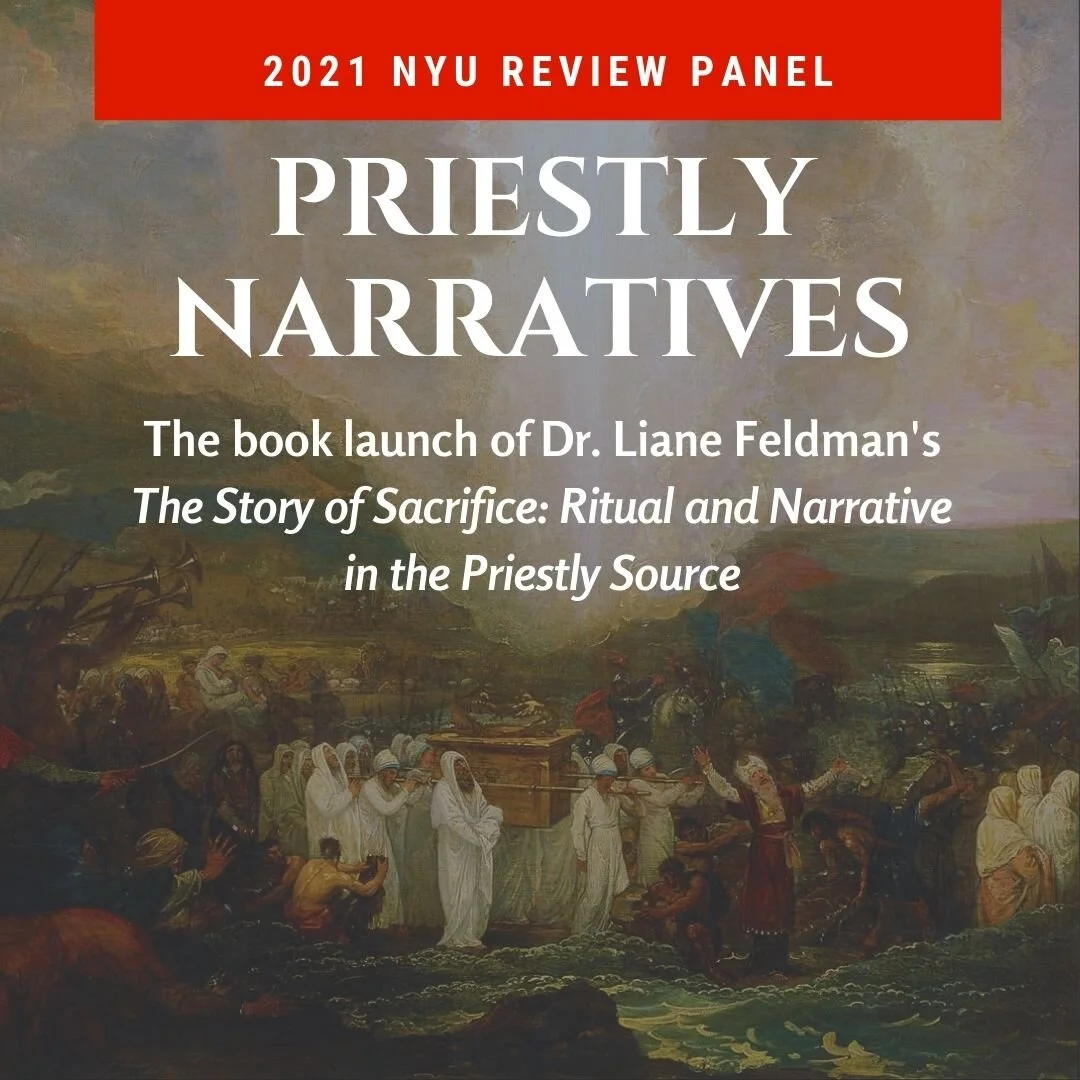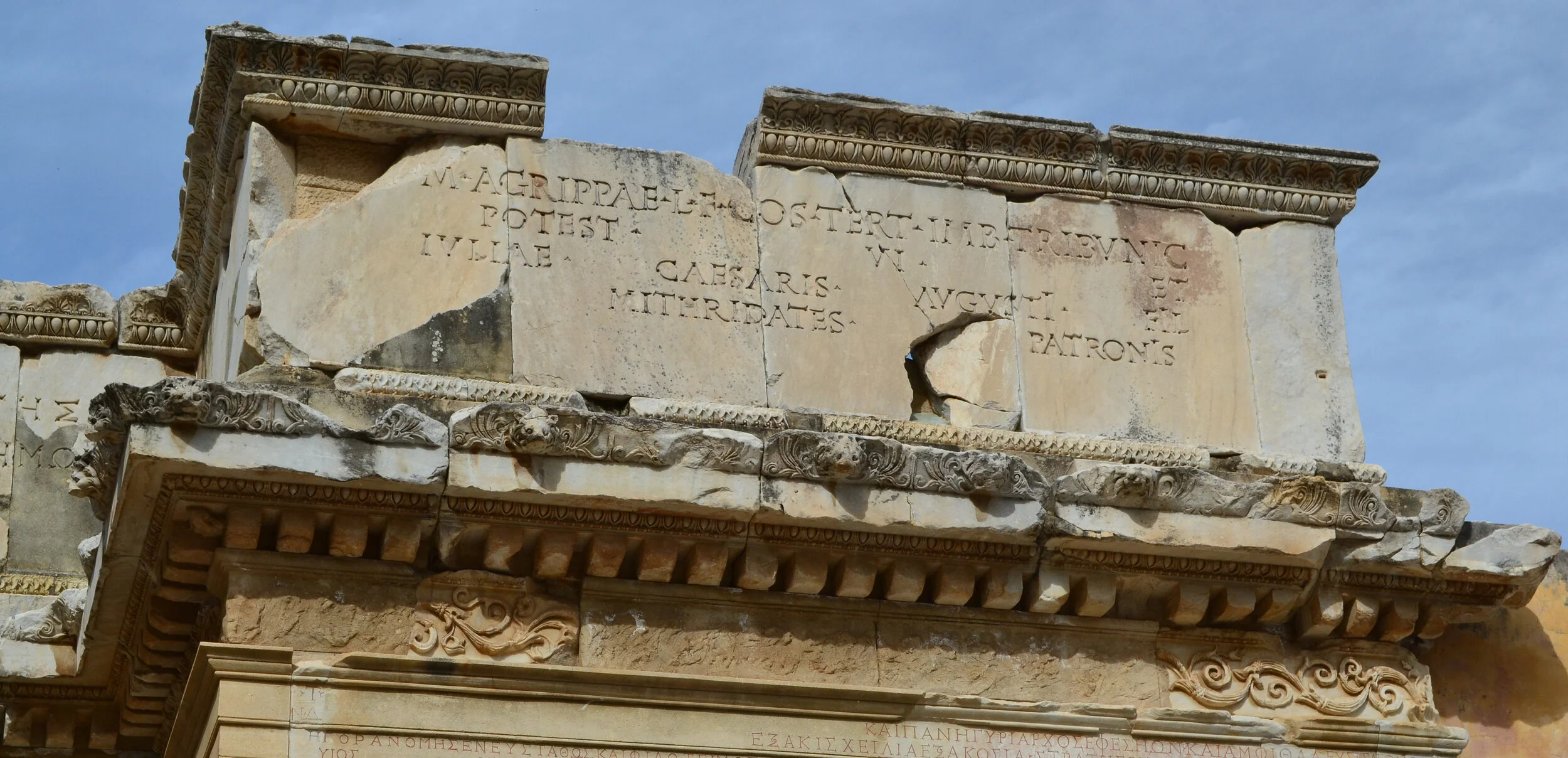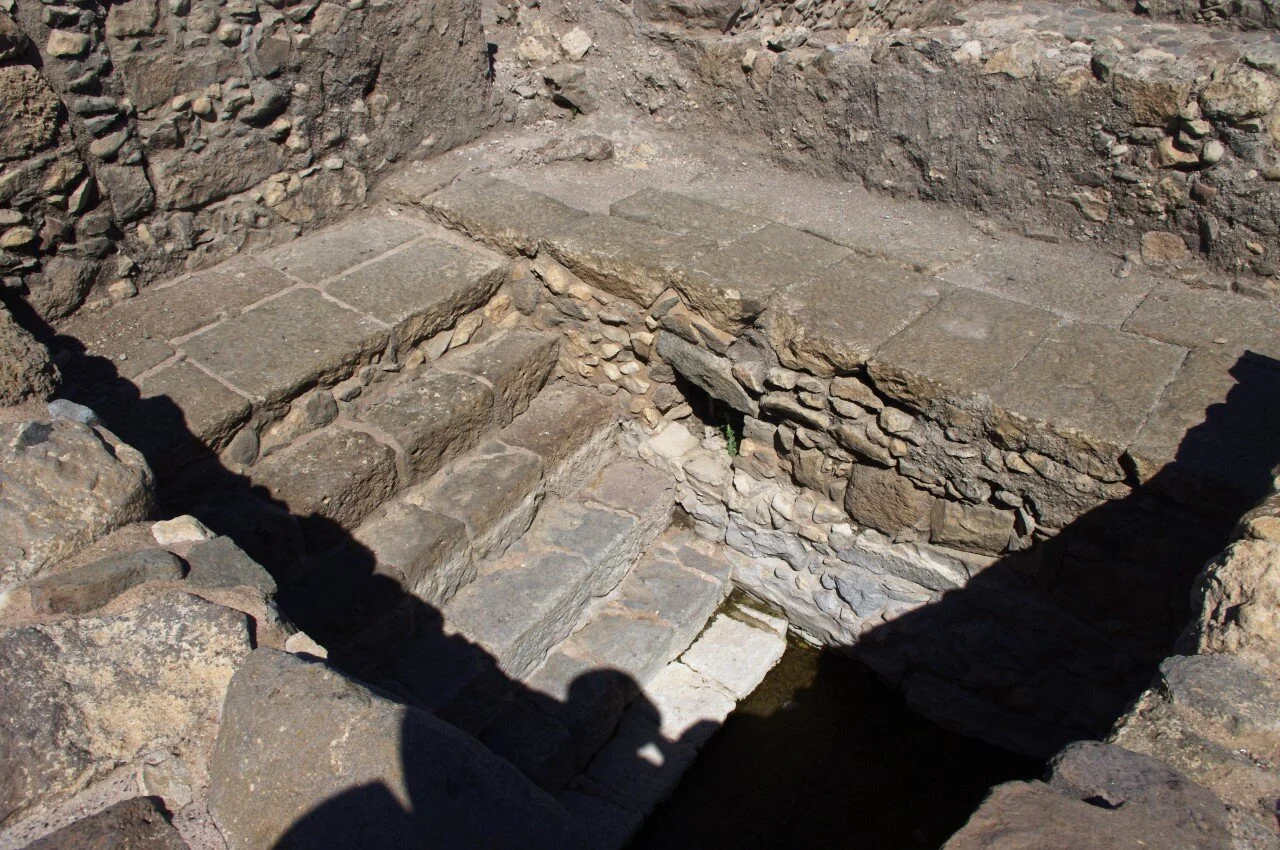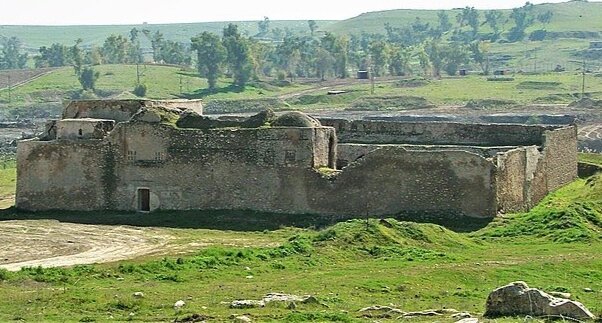A few years ago, I began a simple practice that has transformed my teaching. Now, I look forward to the first few minutes of class as my favorite time.
Read MoreA Perfect Hecatomb of Lipsticks in Every Shade: Using Invocations and Prayers to Imagine Ancient Relationships to the Gods
In writing their own prayers and playing with the literary and religious elements of myth and history, the students actively imagine the relevance these divine beings could have had for their worshippers in order to better integrate course content.
Read MoreTeaching the New Testament as an Expanded Universe
What can stories about Loki, Norse god and (more recently) Marvel character, teach us about biblical literature?
Read MoreCreativity, Critical Thinking, and the UnEssay in the Biblical Studies Classroom
“The ‘UnEssay’ is a creative assignment that helps students learn long-term project management, critical and reflective thinking, analytical writing ability, and a variety of technical skills.”
Read MoreTravel Brochures
The “Dead Sea Scrolls Brochure” assignment has two parts: the physical brochure and a 2-page reflective explanation of the brochure.
Read MorePriestly Narratives: a 2021 NYU Review Panel of Feldman's Story of Sacrifice
In 2021 NYU hosted a virtual book panel on the newly published The Story of Sacrifice: Ritual and Narrative in the Priestly Source by Liane M. Feldman, Assistant Professor in the Skirball Department of Hebrew & Judaic Studies.
Read MorePublication Preview | On My Right Michael, On My Left Gabriel
“In the course of my research, I have been struck by how much American Jews’ response to the topic of angels in Jewish culture depends on their understanding of Judaism vis-à-vis modern Protestant Christian conceptualizations.”
Read MoreBecoming a Man: The Apostle Paul and Masculinity
My doctoral thesis intervenes in this discussion by focusing this relatively new analytical gaze on Paul’s self-presentation in his undisputed letters to argue that the apostle evades straightforward classification as either disrupting or conforming to masculine norms.
Read MoreInterpreting the New Testament Through Inscriptions: An Introduction
My new book, Studying the New Testament Through Inscriptions: An Introduction, introduces Greco-Roman inscriptions to a broader audience, interprets them as archaeological artifacts, and then demonstrates the benefit of epigraphs for interpreting the New Testament through five case studies.
Read MoreReview | Heirs of Roman Persecution: Studies on a Christian and Para-Christian Discourse in Late Antiquity
Even after Christianity attained hegemony in the late Roman empire, accounts of persecution at the hands of the impious appear frequently in the historical record. In fact, late ancient authors continually mobilized what the volume calls the “discourse of persecution” throughout the late ancient Mediterranean to various ends. That discourse and its many manifestations form the volume’s object of inquiry.
Read MoreTime and Difference in Rabbinic Judaism
Time and Difference in Rabbinic Judaism examines conceptions and organizations of time in rabbinic sources, composed between 200 and 600 CE in Palestine and Babylonia but with lasting influence on subsequent Jewish communities, to the present day.
Read MoreLeviticus as a Mission Statement
The point I’m trying to make is that P’s laws of sacrifice are hardly a handbook intended to provide a young priest with everything he needs to know to do his job. Rather, they appear to be outward-facing (if you’ll forgive the jargon), a priestly mission statement (to use another piece of jargon), directed at the people of Israel as a whole.
Read MoreDissertation Spotlight | Religious Identity and Spatiality in Hasmonean and Herodian Galilee
Ritual immersion pool in a domestic context at Magdala: Photo Credit - Joseph Scales
Ritual immersion pool in a domestic context at Magdala: Photo Credit - Joseph Scales
This thesis answers the following two questions: how did ancient Jews create meaningful spaces of religious activity in ancient Galilee, and how did those spaces in turn influence the constitution of ancient Judaism?
Read MoreWhen Moses Goes to Ikea: the Introduction of Systematic Sacrifice
Dr. Andrew McGowan responds on “Priestly Narratives: a 2021 NYU review panel and book launch for Liane Feldman’s Story of Sacrifice.”
Read MoreLegal Discourse as World-Building
Dr. Hindy Najman responds on “Priestly Narratives: a 2021 NYU review panel and book launch for Liane Feldman’s Story of Sacrifice.
Read MoreProcedure as Imaginative Art
Dr. Mira Balberg responds on “Priestly Narratives: a 2021 NYU review panel and book launch for Liane Feldman’s Story of Sacrifice.
Read MoreBook Note | Beyond Orality: Biblical Poetry on its Own Terms
Overall, then, Vayntrub’s study is a timely and incisive contribution to the study not just of biblical poetry, or of representations of oral speech in biblical literature, but of what many biblical traditions fundamentally are and reflect.
Read MoreBook Note | The Wandering Holy Man: The Life of Barsauma, Christian Asceticism, and Religious Conflict in Late Antique Palestine
Composed in Syriac, the Life of Barsauma offers new resources for understanding the construction of holiness in late antiquity.
Read MoreDissertation Spotlight | Domestic Labor and Marital Obligations in the Ancient Jewish Household
Terracotta Lekythos by the Amasis Painter depicting women spinning and weaving. Image courtesy of Wikimedia.
Terracotta Lekythos by the Amasis Painter depicting women spinning and weaving. Image courtesy of Wikimedia.
How does a household function? Who owes what to whom, and how did people conceive of their relationships to one another? How did the realities of work in an agricultural society shape these relationships?
Read MoreBook Note I Slavery, Gender, Truth, and Power in Luke-Acts and Other Ancient Narratives
Christy Cobb, Slavery, Gender, Truth, and Power in Luke-Acts and Other Ancient Narratives (Cham, Switzerland: Palgrave MacMillan, 2019)
In the preface to Slavery, Gender, Truth, and Power in Luke-Acts and Other Ancient Narratives, Christy Cobb presents an image of a 19th century shovel, produced according to its label by a “female slave and blacksmith on the Cobb family farm” around 1850 (viii). Cobb notes that this artifact of enslavement in her family history serves as the impetus for this book; she seeks to open up the historical record and bring to light the truth-telling power of three enslaved women in Luke-Acts: the woman in the courtyard who recognizes Peter as a disciple of Jesus in Luke 22: 47-62, Rhoda, enslaved of Mary, who answers the door to find Peter freed from incarceration in Acts 12, and the divining slave of Acts 16. Cobb deftly combines the literary theory of Mikhail Bakhtin with feminist biblical hermeneutics, arguing that these enslaved women are “focalizors” in Luke-Acts who speak truth to power despite their doubly marginalized status as both women and slaves (63).
Chapter 1, “Introduction: (Re)Turning to Truth,” situates the enslaved women of Luke-Acts within a broader historical and literary landscape. Cobb utilizes a wide range of materials, necessary given the sparse evidence for the circumstances of the enslaved in antiquity. Drawing on Page duBois’ Torture and Truth, Cobb shows how the bodies of the enslaved were 1) subject to corporeal punishment; and 2) conceived as unable to tell the truth except under duress. Luke-Acts, however, renders it differently. In Cobb’s view, while truth and logos were indeed often understood to be the exclusive property of free male subjects, truth here “is found in the ‘other’”, that is, “in the words of three female slaves” (10). To get to this point, Cobb grapples with the Glancy-Harrill debate: the question of whether it is possible to arrive at such conclusions, given that elite perspectives overwhelmingly mediate our access to the experiences of the enslaved. In the end, Cobb concurs with Glancy in that, while our sources are biased, it is still possible to glean historical evidence from the representation of slaves in literary sources, particularly when literary and archaeological sources are read side by side. Furthermore, Cobb asserts that a Bakhtinian lens (explained further in the next chapter) allows for greater recognition of moments in which enslaved figures exceed or counteract the constraints of their representation, speaking outside the aims or desires of the author.
Chapter 2, “Theoretical Foundations: Bakhtin and Feminism,” outlines the theoretical framework of the book. After delineating the theoretical vocabulary structuring her analysis (menippea, the novel, the role of the author, outsidedness, polyphony and dialogism, carnivalesque, and heteroglossia), Cobb addresses the thorny question of engaging Bakhtinian theory and feminist hermeneutics side by side given Bakhtin’s infamous lack of attention to issues of gender (73). In response, she notes that feminists have made productive use of Bakhtin’s body of work in literary studies. Julia Kristeva’s theory of “intertextuality,” developed in conversation with Bakhtin’s work on dialogue and ambivalence, argues that texts are interconnected through the polyphonic and citational nature of textual “utterances” (74-77). While Kristeva does not outrightly claim her work as feminist, Cobb highlights that intertextuality as a theoretical and hermeneutical tool has been influential in feminist and postcolonial circles (77). She concludes that just as Bakhtin’s work sheds new light on Luke-Acts, so also does feminist theory enhance and refine Bakhtin’s analysis of power. Here, Cobb’s analysis turns our attention to the ways in which theoretical frameworks are not isolated entities but stand in dialogic conversation.
The next three chapters analyze the text of Luke-Acts, connecting the three enslaved women truth-tellers to one another and to their counterparts in contemporaneous ancient texts and material culture. In Chapter 3, “The One Who Sees: Luke 22:47-52,” Cobb argues that the unnamed enslaved woman in the courtyard becomes a ”focalizor” of truth and a “mouthpiece of Lukan theology,” whose statement of truth defines Lukan discipleship as those who are “with” Jesus (82). In the famous scene of Peter’s denial of Jesus, Cobb attends to the slave girl (paidiske), who identifies Peter with a withering gaze and names him as one who was “with” Jesus despite his pleading to the contrary. Cobb notes that in each version of this scene in the Gospels, it is the slave girl who recognizes and names Peter. In so doing, the slave girl pushes the boundaries of her marginalized status in the elite space of the courtyard and in relation to the free men around her (89).
In order to provide context both for the circumstances of enslaved women in elite households and for the relationship between slavery and truth, Cobb turns to an intertextual reading of Chariton’s Callirhoe (93-100). Cobb also highlights the powerful and prophetic nature of the gaze of the enslaved by placing Luke in conversation with the flute-player Acts of Andrew (110). When she turns back to the paidiske in Luke 22, Cobb argues that, positioned near the light which further indicates her truth-telling power, the enslaved woman “provides a clear definition for discipleship, even amidst Peter’s betrayal” (112). Bakhtin’s polyphonic dialogism is at work here; the narrative gives equal weight to the two competing perspectives of Peter and the enslaved wo/man even as the reader knows all along that the slave’s witness is the truthful one.
In Chapter 4, “The One Who Answers: Acts 12:12-19,” Cobb develops a portrait of Rhoda as much more than a parodic servus currens (running slave) in the narrative of Acts. Rather, she is a truth-teller situated at a pivotal point in the narrative where the focus shifts from Peter to Paul. Cobb then reads Rhoda’s scene in Acts alongside the torture and truth-telling of Euclia in the Acts of Andrew in order to draw out elements of the carnivalesque in both narratives. In each case, though to differing extremes, categories of social power are (temporarily) upended and the enslaved emerge as special bearers of truth and knowledge over against those in power. Rhoda’s recognition of Peter at the gate signals a carnivalesque turn in Acts, as she is placed in a position of superior knowledge of the truth in relation to the free persons who reject her claims. As Cobb writes, “The climax of this Bakhtinian carnivalesque moment occurs in the doorway of Mary’s house, not inside yet not outside, as the hierarchies within the text (female/male; slave/ free; minor character/apostle) are suspended and the most marginalized of all the characters emerges a truth-teller” (149). While Euclia is represented in Acts of Andrew as a stereotypically deceitful and licentious slave, she is able to masquerade as a free woman for several months and her successful performance reveals the fluid boundary separating free and enslaved. In the end, she tells the truth of Maximilla’s plot and, while she pays for it with her life, she also reveals herself to be more truthful than her enslaver (161). In both texts, the axis of power returns (violently, in the case of Acts of Andrew) to the elite, but Cobb argues that the emergence of Rhoda and Euclia as truth-tellers poses an ongoing challenge to the notion that the enslaved do not possess the logos to speak the truth.
In Chapter 5, “The One Who Prophecies: Acts 16:16-18,” Cobb argues that the much-discussed divining slave of Acts 16 should be engaged through the lens of Bakhtinian heteroglossia, or the use of “another’s speech in another’s language, serving to express authorial intentions but in a refracted way” (164). Her prophetic words ring true in the narrative and she, like the slave in Luke 22:47-52, becomes a mouthpiece for Lukan theology. Cobb contrasts this unnamed slave woman with Lydia of Thyatira in order to emphasize the “outsider” status of the enslaved woman when compared to Lydia’s influential role as an “insider” in the narrative. This “outsider” status gives her a unique perspective from which to see and speak the truth of Paul and Silas, at great cost to the enslavers who used her prophetic power for profit. Cobb also uses evidence from literature and material culture to connect the truth-telling power of the unnamed slave girl to powerful oracular figures in Delphi and elsewhere in the Greek world. Cobb understands the slave girl’s claim that Paul and Silas are “slaves of the Most High God, who proclaim the way of salvation” (Acts 16:17) as heteroglossia, encompassing multiple meanings as the “Most High God” can be “the God of the Hebrew Bible, the God of Paul and Silas, and even the God of the slave girl” (192). Furthermore, the identification of Paul and Silas as “slaves” not only echoes Paul’s use of the discourse of enslavement in his letters but also foreshadows the treatment that Paul and Silas receive at the hands of the authorities later on in Acts 16. In a close reading of each element of her prophetic statement, Cobb sees truth that unfolds as the narrative progresses.
Each of the enslaved women that Cobb analyzes in this book speaks truth to power, despite the risks inherent to doing so from their position as enslaved women. Cobb very effectively utilizes the polyphonic, menippean nature of Luke-Acts to connect these women not only to one another but also to other voiceless enslaved women in ancient narratives. Perhaps the greatest contribution of this book is its use of intertextual analysis to demonstrate that the distinction between enslaved and enslaver was not as clear-cut as those in power wished it to be. In speaking their truth, the enslaved women addressed in this volume challenge the boundary between free and enslaved, revealing the great lengths to which ancient writers must go in order to construct and naturalize these categories.
Bringing feminist biblical interpretation in conversation with Bakhtinian literary theory, Cobb’s work is itself polyphonic. While tense at times, bringing these areas of inquiry into conversation allows for the voices of the enslaved women in Luke-Acts to rise to the surface in new and exciting ways. This book will be of great interest to those interested in the intersections of gender and enslavement but also as a model for using theory not just as a tool to reconstruct the past but as a way to engage the past in the service of justice and truth-telling in the present.
Kelsi Morrison-Atkins is a ThD candidate in New Testament and Early Christian Studies at Harvard Divinity School, Kelsi_morrison-Atkins@mail.harvard.edu.
![An illumination depicting Christine de Pizan writing a book, from her Book of the Queen (Harley MS 4431, f. 4r, "Book of the Queen," France, c. 1410-1414) [British Library].](https://images.squarespace-cdn.com/content/v1/5449167fe4b078c86b41f810/1630373832507-AQ3FJ00YHYJRTSKZOA79/Unknown.png)

![An image of Loki with a fishing net from from the 18th century Icelandic manuscript SÁM 66 [Wikimedia].](https://images.squarespace-cdn.com/content/v1/5449167fe4b078c86b41f810/1629113918188-SRC383LNCL04RGC34OZU/Processed_SAM_loki.jpg)

![Medallion with Saint Paul (ca. 1100 CE) [MET Collection]](https://images.squarespace-cdn.com/content/v1/5449167fe4b078c86b41f810/1624968413569-5LRJB13HW7IJ7E0KLT2G/sf17-190-673s1.jpg)

![Bohumil Kubišta, Kiss of Death (1912) [Wikimedia]](https://images.squarespace-cdn.com/content/v1/5449167fe4b078c86b41f810/1622990626830-7MX8BLM1FHUSMDV1EQQ1/344px-Kubista%2C_Bohumil_-_Polibek_smrti_%281912%29.jpg)









